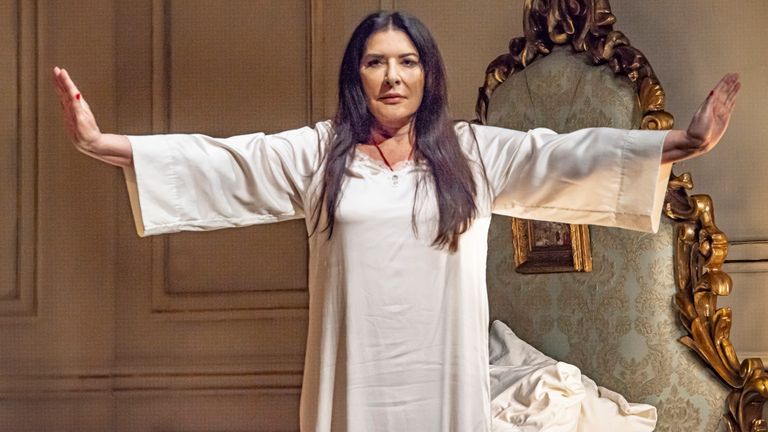Pain, Power, Performance: Inside The World Of Marina Abramovic
Perhaps you’ve heard the following story: a woman sits motionless in a room with a table of dangerous objects and challenges her audience to do whatever they like to her. They do, and she remains completely still. It was a terrifying glance into the human psyche. That woman was Marina Abramović, and her career as an artist is a truly remarkable one.
Rhythm 0
Abramović is known as “the grandmother of performance art.” Her exhibits tend to represent tremendous tests of grit and endurance. Take her most famous one, Rhythm 0, the piece where she sat in front of a table.
On said table were items including a whip, scissors, a gun, and a rose. She told the assembled audience could do whatever they wanted to her with those objects: the results were deeply unsettling.
Violated
Abramović later said that she learned, “If you leave it up to the audience, they can kill you.” Knowing they could hurt her without consequences, some people became violent and aggressive towards her.
She later recounted, “I felt really violated: they cut up my clothes, stuck rose thorns in my stomach, one person aimed the gun at my head, and another took it away. It created an aggressive atmosphere. After exactly six hours, as planned, I stood up and started walking toward the audience. Everyone ran away, to escape an actual confrontation.”
Dedication
The performance piece was regarded as a success, despite the horrors inflicted on Abramović. It had helped to demonstrate an unpleasant truth about human nature, and Abramović’s utter, terrifying dedication was all part of the piece.
Art critic Thomas McEvilley claimed of the event, “She was so committed to the piece that she would not have resisted rape or murder.” It goes without saying that for most people, this kind of act would be completely unthinkable.
Abramović’s past
What sort of woman would dedicate herself to art so completely? Abramović’s past might hold the key. She was born in Serbia, which was then part of Yugoslavia, and her parents were both considered heroes of World War II.
Abramović’s parents became government workers and the budding artist was sent to live with her very religious grandparents until she was six. But once her parents began raising her, things weren’t easy.

